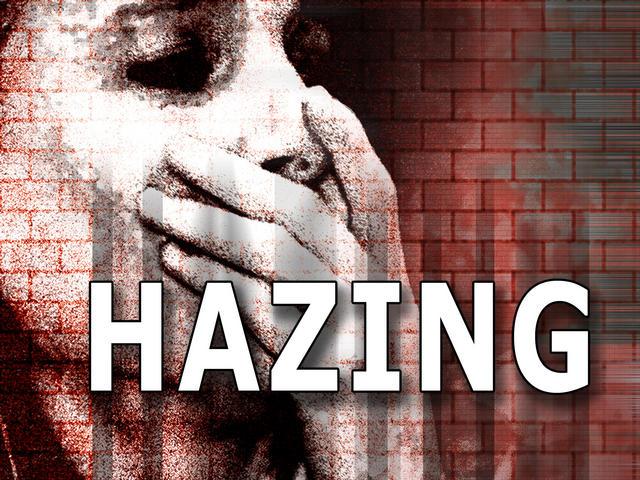 People across Florida and the nation are watching the marching band at Florida A&M University. The group was recently taken off of suspension following the November 2011 death of one of its members during a hazing ritual. Robert Champion was a 26-year-old drum major who was beaten to death by fellow band members on a bus. The musicians used drum sticks, drum mallets, and their hands to deliver the deadly assault. Though the members did not intend to kill Champion, their particularly cruel form of initiation was classified as manslaughter, and 14 of the band members were charged with felonies. The band was placed on suspension, the band director retired, and the incident contributed to the retirement of the university president, James H. Ammons.
People across Florida and the nation are watching the marching band at Florida A&M University. The group was recently taken off of suspension following the November 2011 death of one of its members during a hazing ritual. Robert Champion was a 26-year-old drum major who was beaten to death by fellow band members on a bus. The musicians used drum sticks, drum mallets, and their hands to deliver the deadly assault. Though the members did not intend to kill Champion, their particularly cruel form of initiation was classified as manslaughter, and 14 of the band members were charged with felonies. The band was placed on suspension, the band director retired, and the incident contributed to the retirement of the university president, James H. Ammons.
The university instituted strict anti-hazing programs and held student anti-hazing forums. In late June 2013, the university's interim president, Larry Robinson, announced that he was lifting the suspension. The announcement was met with mixed reactions; some were happy to see the band back on the field, while others felt that their punishment was too lenient. However, the legal ramifications of the incident are far from over - the 14 students charged with felonies have not all been tried, and Champion's family is waging a wrongful death case with the university, claiming that the university knew of the band's extreme hazing rituals and chose to ignore them.
Robert Champion's tragic death is far from an isolated incident. Hazing rituals have been a part of American university culture since the early days of Harvard in the 1600s. According to StopHazing.org, hazing is defined as "any activity expected of someone joining a group (or to maintain full status in a group) that humiliates, degrades, or risks emotional and/or physical harm, regardless of the person’s willingness to participate."
In the past, hazing rituals were generally harmless, though embarrassing ordeals for freshman fraternity and sorority members or members in other college groups. However, recent incidents of extreme hazing, such as the one at Florida A&M, have resulted in severe injury or even death. Not only do these occurrences mar the lives of the victims, they can have devastating consequences on the initiators, as well. At best, they will be subject to a personal injury lawsuit, and at worst, they could face criminal charges, including charges of manslaughter. Here is a look at five of the worst college hazing incidents and their legal ramifications.
- One of the earliest incidents of extreme hazing occurred at the University of North Carolina Chapel Hill, when Isaac William Rand fell off of a barrel and landed on a broken bottle, striking his jugular vein. The four students responsible for the event were expelled from the university, and three of them were found guilty of manslaughter.
- In February 2005, Matthew Carrington died during Chico University's "Hell Week," a time when fraternities are told to be particularly hard on newly pledged students. Carrington, along with another fraternity brother, were forced to do calisthenics and take trivia quizzes in a dirty, frigid basement filled with sewage. During the ordeal, they were forced to guzzle five gallon jugs of water, one after another. Eventually, Carrington collapsed and had a seizure. The fraternity brothers delayed in calling an ambulance, and when they finally did, it was too late. Carrington died at the hospital, a victim of water intoxication. Twenty-two-year-old Gabriel Maestretti was found to be the instigator of this cruel hazing and was convicted of felony charges and sentenced to one year in jail.
- Brian Yost suffered a traumatic brain injury during a fraternity "hall brawl," a mass wrestling session that erupted during a hazing incident at Wabash College in 2007. Because the incident was not directly linked to hazing and could be considered more horseplay than anything else, some legal experts are not sure whether this constitutes a legitimate injury case. However, if it does qualify, Wabash College could face unprecedented legal responsibility, says Yost's personal injury lawyer. Wabash College owned the fraternity house, and according to some, was well aware of the alcohol abuse that went on there.
- In 2001, Chad Meredith was pledging to the Kappa Sigma fraternity at the University of Miami. After a night of heavy drinking, Meredith's fraternity brothers told him to swim across Lake Osceola. Meredith drowned 34 feet from shore. His tragic death lead to the passage of the Chad Meredith Act, which clarified and expanded the definition of hazing and put harsher penalties in place for those found guilty of hazing.
- Eighteen-year-old Tyler Cross died in 2006 when he fell from a fifth story apartment after being hazed by the Sigma Alpha Epsilon fraternity at the University of Texas. According to reports, he had drunk a large amount of alcohol and had been beaten with bamboo that night. Cross's parents sued the fraternity and won a wrongful death suit, though a confidentiality agreement prevented the details of the settlement from being released.
Sadly, despite multiple cases of cruel hazing incidents, these events continue to occur. It is our hope that stricter anti-hazing laws will be passed and that universities will implement more comprehensive anti-hazing programs. It is time that these rituals stopped, and it is time that these grown-up bullies are forced to face the consequences of their actions.
Julie Luhrsen has spent the better part of 20 years helping individuals as a personal injury attorney at Luhrsen Law Group Sarasota, FL. She attributes her early love of helping others to her time in the Army JAG Corps where she helped individual soldiers with legal problems—a job she performed for eight years and for which she received many military awards.







